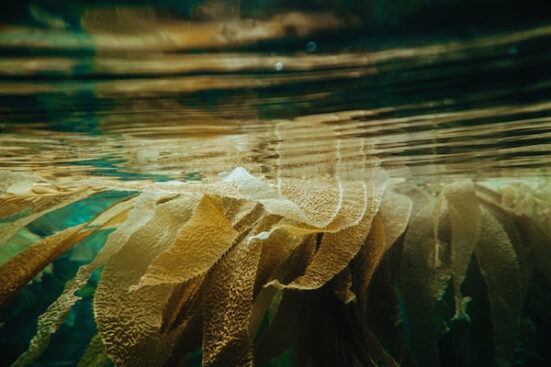
What is decarbonization? IBM’s website defines decarbonization as “a method of climate change mitigation that reduces greenhouse gas emissions, as well as removes them from the atmosphere.”
Decarbonization can happen naturally or can involve human intervention. When we think of natural ways to decarbonize, the first image that comes to mind is reforestation. Trees are great at sucking up carbon dioxide (CO2), so we should plant more of them and cut less of them. But there are other natural ways to decarbonize. Soil can be an effective carbon sink. Grasslands as well. And then there is peat, which can suck up its fair share of CO2 and sequester it, that is until we dig it up and burn it. And not to be overlooked, there is algae.
Algae is what constitutes seaweed. Seaweed can form huge kelp farms or can float on ocean surfaces like sargassum. Recently, The Economist published a special report on CO2 removal. One of the projects described in its report is being run by Maine-based Running Tide, a self-described “world leader in ocean carbon removal.” The location is Iceland where the company is building Carbon Buoys (see picture below), made from alkaline-coated woody biomass seeded with Ulva lactuca, a common seaweed. The goal of the project is to create a fast-cycle carbon sink in the ocean.

What I didn’t mention at the outset of this article is that the biggest natural decarbonizer on the planet are the world’s oceans, absorbing 30 to 40% of all the CO2 humans emit into the atmosphere. Seaweed plays a part in ocean carbon capture. When it dies, it sinks to the ocean floor where its biomass either gets consumed by the fauna that inhabit the ocean depths or remineralizes when coming in contact with marine sediments.
Running Tide’s Carbon Buoys are made from harvested biomass taken from sawmills and agricultural operations. They are given an alkaline coat which is sourced from lime kiln dust, olivine, or basalt. They are seeded with juvenile sea lettuce or other seaweeds and set adrift. The seaweed grows quickly, eventually reaching a state of negative buoyancy causing them to sink. Seaweed like sea lettuce sequesters three times more carbon than phytoplankton. The Carbon Buoys also sink faster than phytoplankton after they die.
What is the purpose of the alkaline coating? When the ocean decarbonizes the atmosphere the CO2 that dissolves in it makes the water more acidic. As the Carbon Buoys drift, the alkaline coating counters this acidity, a bonus.
Running Tide plans to deploy Carbon Buoys in ocean currents to grow seaweed that within two weeks will drop to the ocean floor. Areas, where the buoys are to be released, have ocean floors with high rates of sedimentation to ensure the carbon becomes embedded in the seafloor. These include areas of the North Atlantic, North Pacific, and Antarctic Southern Ocean.
Sargassum is also seen as a decarbonizing candidate. At Columbia University’s Lamont-Doherty Earth Observatory, oceanographers are looking to use it. Sargassum is found in temperate latitudes of the Mid-Atlantic Ocean. Researchers associate recent massive sargassum blooms that have drifted onto Caribbean island beaches as evidence of climate change. On the beaches, sargassum is unattractive and also a health hazard. It emits hydrogen sulphide gas and is not good for tourism. If gathered offshore, however, it could become an excellent decarbonizer if sunk.
A third seaweed decarbonizing idea comes from the University of California – Davis. Off California’s coast, giant kelp grows more than a half-metre (almost 2 feet) a day. Kelp can take up to 20 to 30 carbon atoms for every nitrogen atom absorbed. An underwater 100-metre (330-foot) square kelp field, if grown along 63% of the world’s coastlines would sequester 0.1 gigatons of carbon per year according to a committee report produced for the United States National Academies of Sciences, Engineering, and Medicine. Not all ocean areas provide conditions favourable to this approach.
Another study published in the journal Communications Earth & Environment last June proposed to pull nutrient-rich water from the ocean depths using artificial upwelling to make large-scale seaweed farming viable as a decarbonizing strategy.
It remains unclear if there is a downside to dropping massive amounts of biomass on the seafloor. If local marine life cannot consume it, and if the mineralizing potential of the seabed is less than optimal, when it rots it will deoxygenate the deepest parts of the water column making this area of the ocean uninhabitable for anything but anaerobic microbes.








